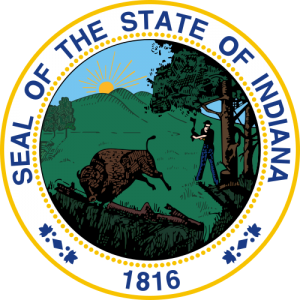 Indiana Population 2013
Indiana Population 2013
The United States Census Bureau estimates that the population of Indiana in 2013 was 6,537,334, which is ranked the 16th largest population in the United States. This estimate shows a 0.8% increase since the last census in 2010, also conducted by the United States Census Bureau. The population density of the state is 182 people per square mile, ranked the 16th largest density in the United States.
Indiana Population Projection
The population of Indiana is expected to reach 6.85 million people by the year 2020, which is an approximate 4.8% increase from the current population. By the year 2030, the population is expected to reach 7 million people, which is an approximate 7.1% increase from the current population. By the year 2040, the population is expected to reach 7.2 million people, which is an approximate 10.1% increase from the current population.
Indiana Land Mass
The state of Indiana is approximately 270 miles long and 140 miles wide with a square area of 36,420 square miles, making it the 38th largest state in the country. Of the 36,420 square miles, only 550 square miles are covered by water. The highest point in the state of Indiana is Hoosier Hill in Franklin Township, reaching 1,257 feet above sea level. The lowest point in the state is where the Wabash River meets the Ohio River, which reaches 320 feet above sea level. The geographic center of Indiana is located in Marion County, 14 miles north northwest of Indianapolis. Indiana is bordered by four states: Ohio, Kentucky, Michigan, and Illinois. Lake Michigan borders the state on the north.
Indiana is broken up into three distinct geographic land areas: the Great Lakes Plains, Till Plains, and the Southern Plains and Lowlands. The Great Lakes Plains is in the northern part of the state. The most northern part, near Lake Michigan, is made up of sandy dunes. To the south of the sand dunes is area with black soil, which is very good for farming. The Till Plains are to the south of the Great Lakes Plains. This area is part of the Midwestern Corn Belt and is made up of fertile land. The highest point in the state is located in the Till Plains. Lastly, the Southern Plains and Lowlands is in the southern part of the state. There are many steep hills divided by lowlands and also some caves and caverns. This part of the state is the hilliest part of the state.
Indiana Demographics
Of the approximate 6.54 million people in the state of Indiana, about 50.8% of the population is female, while 49.2% is male. Also, approximately 87% of the population identifies as white (including Hispanic or Latino). But, out of that 87%, about 6% do identify as Hispanic or Latino and the other 81% as Caucasian. Those that identify as Black or African American make up only 9% of the entire population of the state of Indiana. The rest of the population is made up of those that identify as Asian, American Indian, Alaskan Native, Hawaiian, other Pacific Islanders, or those that identify as two or more races. These other races make up about 4% of the Indiana population.
Indiana Religion
The population of Indiana identifies as religious at a rate slightly lower than the national average. About 44% of the state population identifies as religious, compared to the national average of 49%. Out of the 44%, about 12% identify as members of the Catholic Church, making it the largest denomination in the state of Indiana. All the other Christian denominations make up about 31.2% of the population. Those who identify as Jewish, Islamic, or Eastern religions only make up 0.8% of the population.
Visit Indianapolis Indiana
 Indiana Sports
Indiana Sports
The state of Indiana has professional teams in two of the major sports: basketball and football. Indiana’s team represented in the National Basketball Association is the Indiana Pacers. The Indiana Pacers are based out of Indianapolis and play in the Bankers Life Fieldhouse. Indiana’s team represented in the National Football League is the Indianapolis Colts. The Colts are based out of Indianapolis and play in the Lucas Oil Stadium.
Other Resources
Learn more about the state of Indiana in the United States and the state’s population statistics here.


